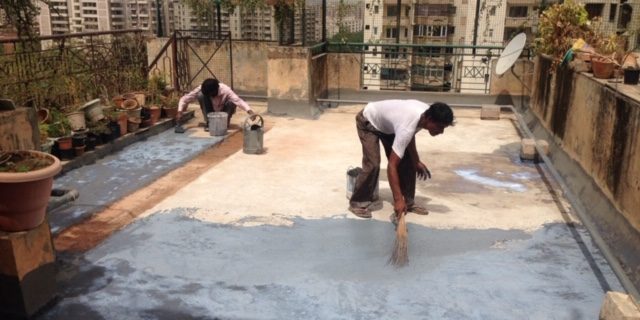Crack injection is the most excellent technique of filling cracks in concrete. Wall cracks are entryways of toxic gases, leaking water and dampness that causes growth of mould, mildew and fungus. The most appropriate way to seal the wall cracks and prevent its affects is to carry out crack injection repair by epoxy or polyurethane injection.
Steps of polyurethane crack injection: The crack is located and cleaned out. Technicians drill small holes at 45-degree angle every 6 to 8 inches changing from side to side operating the middle of the crack. Then, a series of steel ports are attached to the holes in the crack. Steel ports are used instead of plastic ports. The steel ports are used as the entryways for the polyurethane and are used to achieve right pressure to ensure the urethane is spread in an even way. The ports are then injected with polyurethane from bottom to top with hydraulic pressure. Water is utilized as a catalyst for the polyurethane material and once the material interacts with the water in the crack, it starts foaming and in sequence, tremendously expands its volume thus putting a stop to water from seeping in. Polyurethane foam works properly for closing leaking cracks and putting a stop to the water leakage for good. The hydrophilic polyurethane has the capability to expand 20 times its original volume to seal off all cracks and gaps from front to back. Once it gets into the crack it begins to expand. The outcome of the expansion leads to the injection procedure more convenient for the technicians – when the polyurethane expands, the foam is actually filling any empty spaces and gaps in the foundation. Also, urethane begins forming in around 3 minutes and finishes expanding in around 10 minutes. Steps of epoxy crack injection: The application of epoxy resin along with carbon fibre staples is an additional option. In this technique, cuts are made at right angles to the crack using drill machine. Then, epoxy encoded carbon fibre strips are installed on the cuts. Carbon fibre staples or strips are installed to reinforce the crack by adding tensile strength and they stabilize the wall to put a stop to further cracking and shifting. Reinforcements like carbon fibre staples in combination with epoxy injection make sure that the filled cracks do not reopen or appear again and ensure that applied stress to the foundation will get shifted from the filled area, making it a robust solution to the original crack. In that way, epoxy foams offer strength and stability to the cracks. This procedure normally takes 2 hours and DryShield provides a full 25-year transferrable warranty. Epoxy resin injections are also known as surface port injections for the reason that the process incorporates the application of t-ports or carbon strips to inject the epoxy into the crack. The application of epoxy is essential for structural cracks in the foundation.
+911244234567[email protected]




